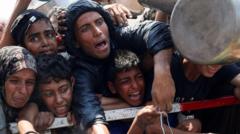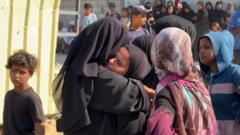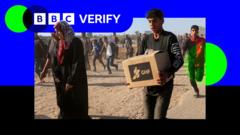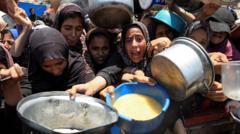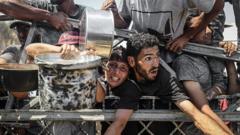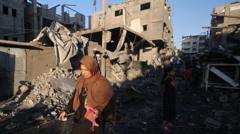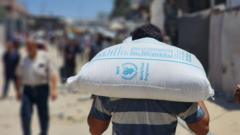Jeremy Bowen analyzes the recent proposal by Israel to air drop aid into Gaza, expressing skepticism about its effectiveness in addressing the region's hunger crisis and emphasizing the need for a more comprehensive humanitarian strategy.
Assessing the Effectiveness of Air-Dropped Aid in Gaza
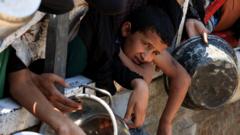
Assessing the Effectiveness of Air-Dropped Aid in Gaza
Exploring the implications of air dropping aid amidst the hunger crisis in Gaza and the complexities surrounding humanitarian efforts.
In a recent commentary, Jeremy Bowen, the International Editor for a prominent news outlet, reflects on Israel's proposal to air drop humanitarian aid into the Gaza Strip amid increasing international criticism regarding hunger in the region. While some nations like Britain, France, and Germany have voiced robust demands for Israel to lift restrictions on aid to Gaza, Israel maintains that it imposes no such limitations. This discrepancy has led many organizations and allies to question the claims, arguing that the humanitarian situation is dire.
Bowen compares the air drops to previous instances he witnessed, namely in Iraqi Kurdistan after the Gulf War and during the siege of Mostar in Bosnia. He recalls the crude manner in which aid was airdropped, causing dangerous situations where desperate civilians would risk their lives to claim scarce supplies. His firsthand accounts highlight the reality that while air dropping can provide immediate relief, it often leads to chaos and danger, as aid does not inevitably land where it is most needed.
In the case of Gaza, Bowen emphasizes that air dropping aid is not a viable long-term solution to the hunger crisis. He argues that effective assistance requires more than isolated acts of goodwill. Instead, a permanent ceasefire and the establishment of unhindered access for humanitarian operations are crucial for effectively addressing the fundamental issues causing starvation within the region.
The journalist points out logistical challenges faced during air drops, whereby pallets often land far from the intended recipients, potentially creating further conflict as people compete for limited supplies. The armed and criminal elements in Gaza may also capitalize on the situation, threatening the vulnerable population even more.
With reports indicating that a significant portion of Gazans have gone without food for days, the urgency for a reliable and sustainable humanitarian approach is clearer than ever. Bowen's analysis suggests that air drops, while perhaps visually appealing, ultimately represent a desperate measure that fails to address the enduring plight of the affected populations in Gaza.

